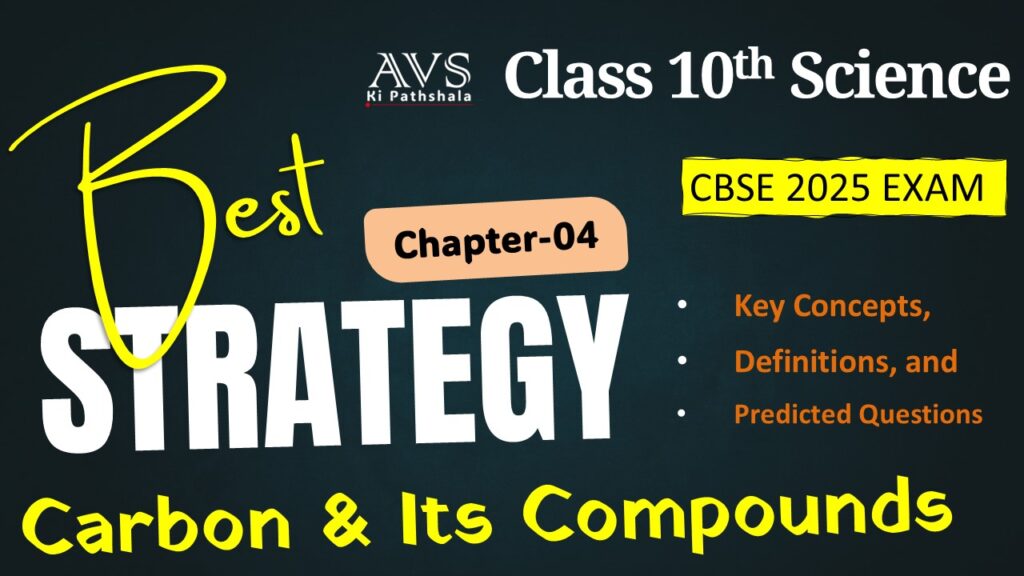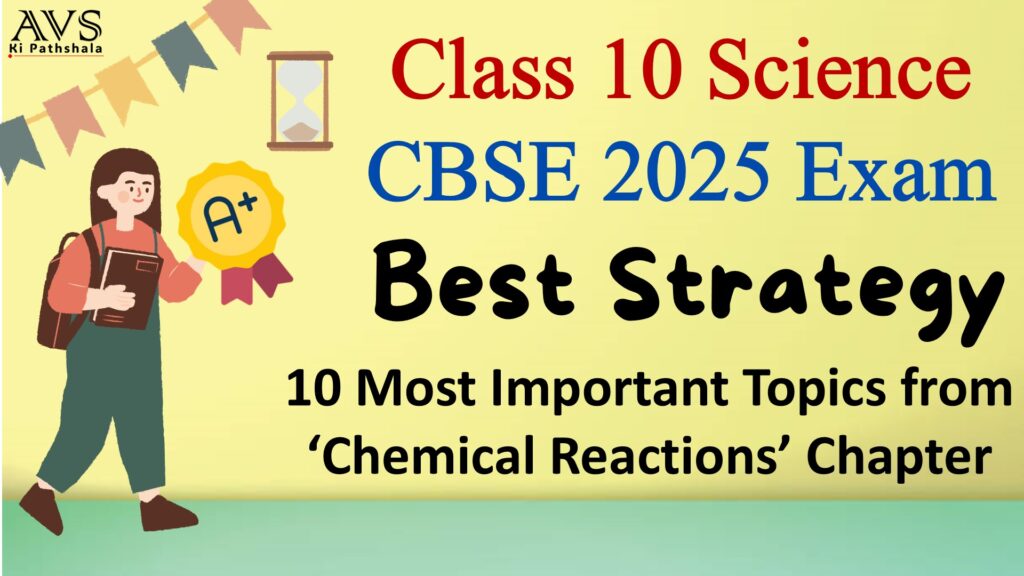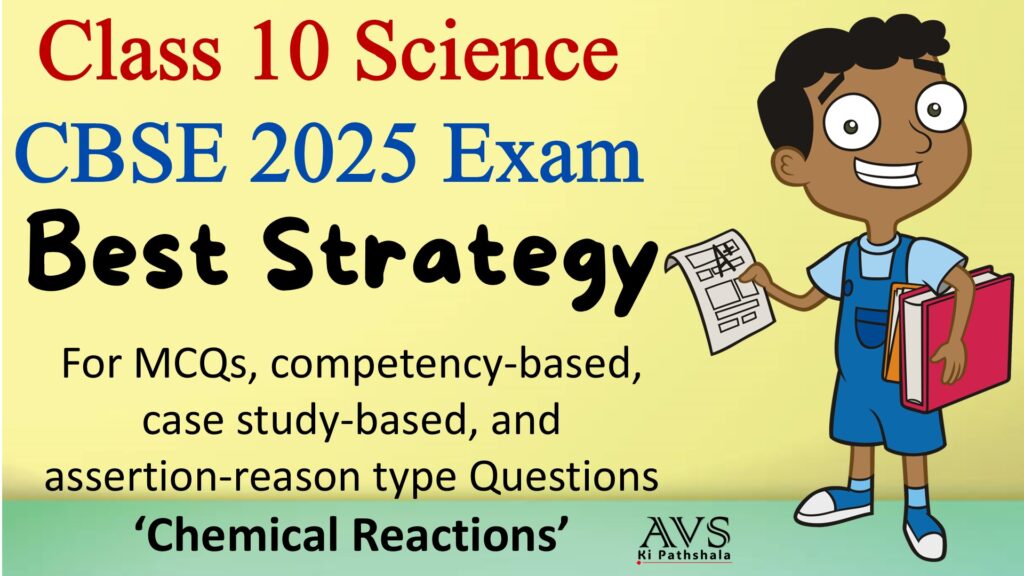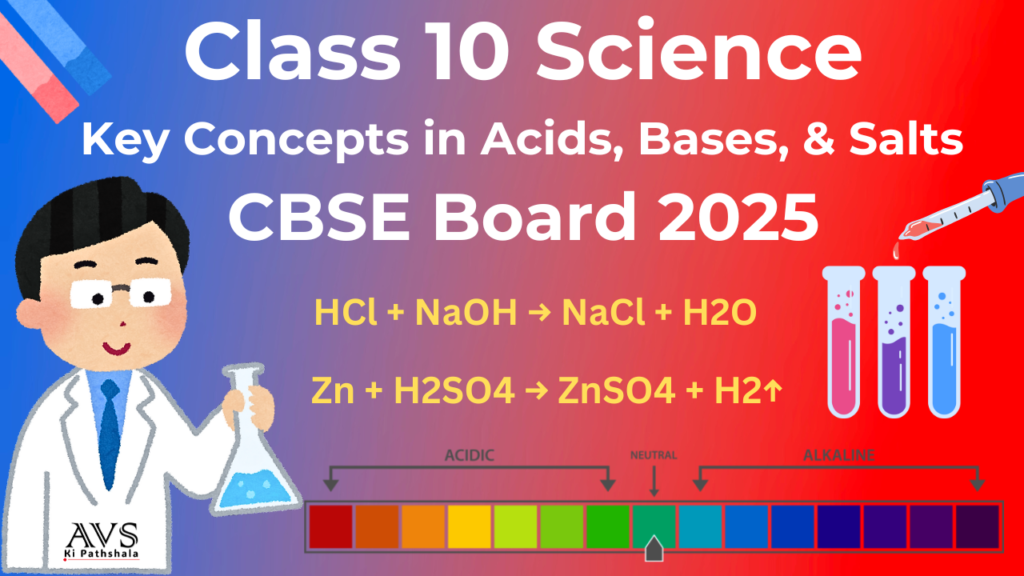Class 10 Science CBSE 2025 Exam
The chapter “Carbon and Its Compounds” is one of the most significant in CBSE 2025 Class 10 Science. Carbon’s versatility allows it to form a wide variety of compounds, making this chapter essential for understanding organic chemistry. The CBSE board frequently tests students’ knowledge of the properties, reactions, and uses of carbon compounds through theoretical, numerical, and application-based questions.
This guide will analyze past board questions and predict the most important topics for the CBSE 2025 board exam. We will also provide insights into the type of questions (MCQs, short answers, competency-based, etc.) that could be asked, along with relevant definitions, formulas, and key points to remember.
Top 10 Important Topics for the CBSE 2025 Board Exam
(in priority order)
1. Covalent Bonding in Carbon Compounds
- Type of Question: Short answer, MCQs, and assertion-reason
- Explanation: Covalent bonding is key to understanding why carbon forms such a vast number of compounds. Questions often ask about the nature of covalent bonds, properties of covalent compounds, and diagrams to represent them.
- Definition: Covalent bonding is the sharing of electron pairs between atoms.
- Important Points: Properties of covalent compounds (low melting/boiling points, poor conductivity).
2. Versatile Nature of Carbon (Tetravalency and Catenation)
- Type of Question: Competency-based, short answer
- Explanation: Carbon’s tetravalency and catenation lead to its ability to form chains, branches, and rings, allowing for a large number of compounds.
- Key Terms: Tetravalency (forms four covalent bonds), Catenation (carbon’s ability to bond with itself).
3. Homologous Series
- Type of Question: MCQs, short answer
- Explanation: Understanding homologous series is crucial for identifying and classifying organic compounds. Expect questions on the definition, properties, and examples of homologous series.
- Definition: A series of organic compounds having the same functional group but differing by a CH2 unit.
- Formula: General formula for alkanes – CnH2n+2.
4. Nomenclature of Organic Compounds
- Type of Question: Short answer, competency-based
- Explanation: Nomenclature is an important section where students are asked to name compounds or draw structures from given names.
- Key Terms: IUPAC rules for naming alkanes, alkenes, alkynes.
5. Chemical Properties of Carbon Compounds
- Type of Question: Competency-based, case study-based
- Explanation: Reactions such as combustion, oxidation, addition, and substitution are frequently asked in exams.
- Important Reactions:
- Combustion of methane: CH4 + O2 → CO2 + H2O.
- Oxidation: Ethanol to ethanoic acid.
6. Ethanol and Ethanoic Acid
- Type of Question: Assertion-reason, short answer
- Explanation: The properties and uses of ethanol and ethanoic acid are highly tested. This includes their physical properties, chemical reactions, and real-life applications.
- Important Points: Uses of ethanol and ethanoic acid, reaction of ethanoic acid with sodium carbonate.
7. Soaps and Detergents
- Type of Question: Competency-based, MCQs
- Explanation: Soaps and detergents are a common topic with questions about their cleansing action, saponification process, and differences between soaps and synthetic detergents.
- Important Terms: Micelles, emulsification.
8. Isomerism in Carbon Compounds
- Type of Question: Competency-based, short answer
- Explanation: Structural isomerism is a fundamental concept in organic chemistry. Questions often involve identifying or explaining isomers of compounds.
- Key Terms: Chain isomerism, position isomerism.
9. Functional Groups and Their Reactions
- Type of Question: Short answer, competency-based
- Explanation: Recognizing functional groups like alcohols, aldehydes, and carboxylic acids, and understanding their reactions is critical. Questions may focus on identification or reactions of compounds.
- Common Functional Groups: Hydroxyl (-OH), Carbonyl (-CHO), Carboxyl (-COOH).
10. Distinction Between Saturated and Unsaturated Hydrocarbons
- Type of Question: MCQs, assertion-reason
- Explanation: Students may be asked to differentiate between alkanes, alkenes, and alkynes based on structure and reactivity.
- Formula:
- Alkanes: CnH2n+2 (Saturated)
- Alkenes: CnH2n (Unsaturated)
- Alkynes: CnH2n-2 (Unsaturated)
Important Points to Remember:
- Focus on reactions and properties of ethanol and ethanoic acid.
- Understand the difference between soaps and detergents.
- Practice naming and identifying organic compounds using IUPAC nomenclature.
Important Topics for MCQs, Competency-Based, Case Study, and Assertion-Reason Type Questions
1. MCQs (Multiple Choice Questions):
MCQs often focus on basic concepts, definitions, and simple identification. These questions are typically direct and test foundational understanding.
- Covalent Bonding in Carbon Compounds
- Example: “Which type of bond is present in methane (CH4)?”
- Homologous Series
- Example: “Which of the following is a member of the alkane homologous series?”
- Soaps and Detergents
- Example: “Which of the following statements is true regarding detergents?”
- Saturated vs. Unsaturated Hydrocarbons
- Example: “Which hydrocarbon has a double bond in its structure?”
2. Competency-Based Questions:
These questions assess a student’s ability to apply knowledge in real-world scenarios or problem-solving contexts. They often involve explanations or problem-solving skills.
- Versatile Nature of Carbon (Tetravalency and Catenation)
- Example: “Explain how carbon’s tetravalency leads to the formation of a large number of compounds.”
- Nomenclature of Organic Compounds
- Example: “Name the following compound: CH3-CH2-CH2-OH.”
- Isomerism in Carbon Compounds
- Example: “Identify and draw the structural isomers of butane.”
- Functional Groups and Their Reactions
- Example: “What is the functional group in ethanol? Write its reaction with sodium.”
3. Case Study-Based Questions:
These are typically longer questions that require analysis of a given situation, application of concepts, or interpretation of data.
- Chemical Properties of Carbon Compounds
- Example: “A student burns ethanol in the laboratory and observes that it produces a blue flame. Explain why ethanol burns with a blue flame and write the chemical reaction.”
- Properties and Reactions of Ethanol and Ethanoic Acid
- Example: “A case study explains the use of ethanol as a solvent in medicines and ethanoic acid in food preservation. Based on the case study, identify their properties that make them suitable for these uses.”
4. Assertion-Reason Type Questions:
These questions assess understanding by presenting a statement (assertion) and a reason, with the student required to evaluate whether they are both true and if the reason correctly explains the assertion.
- Covalent Bonding in Carbon Compounds
- Example: Assertion: “Covalent compounds have low melting and boiling points.”
Reason: “Covalent compounds do not have strong intermolecular forces.”
- Example: Assertion: “Covalent compounds have low melting and boiling points.”
- Properties of Ethanoic Acid
- Example: Assertion: “Ethanoic acid turns blue litmus paper red.”
Reason: “Ethanoic acid is a weak acid.”
- Example: Assertion: “Ethanoic acid turns blue litmus paper red.”
Overview:
- MCQs: Focus on direct, factual knowledge.
- Competency-Based Questions: Test application of knowledge in solving problems or explaining processes.
- Case Study-Based Questions: Involve interpreting a scenario and applying multiple concepts.
- Assertion-Reason: Assess deeper understanding and logical reasoning about concepts.
Conclusion:
To excel in the “Carbon and Its Compounds” chapter for the 2025 CBSE board exams, students should focus on understanding core concepts like covalent bonding, functional groups, and the versatility of carbon. By mastering the nomenclature and reactions of carbon compounds, along with their real-life applications, students can confidently approach both theoretical and application-based questions.
By preparing thoroughly in these areas, students can excel in all types of questions on the “Carbon and Its Compounds” chapter for the CBSE 2025 exams.
To enhance your preparation even further for CBSE 2025 Exam, you can also connect with us on YouTube, where we will guide you through all these topics in a comprehensive manner. To join us on YouTube, simply click the link below, and you’ve already taken your first step towards scoring better marks.
In the next post, we will discuss the key topics of the chapter ‘Life Processes’.
Note: All the topics covered in this article are based on the “Carbon and Its Compounds” chapter of Class 10 Science CBSE 2025 Board and have been curated after analyzing previous years question papers. This article can be helpful for students aiming for success in exams, but it’s also important to thoroughly understand the entire syllabus and practice regularly.
Best wishes to all students!
Thank you!





